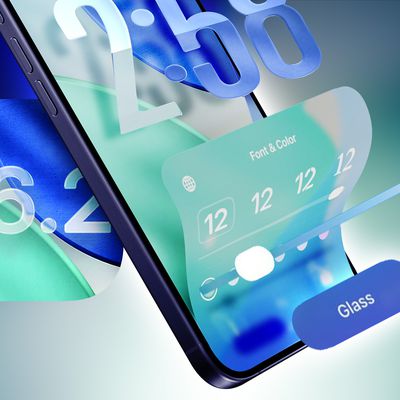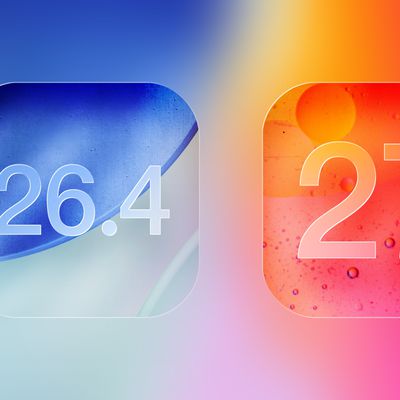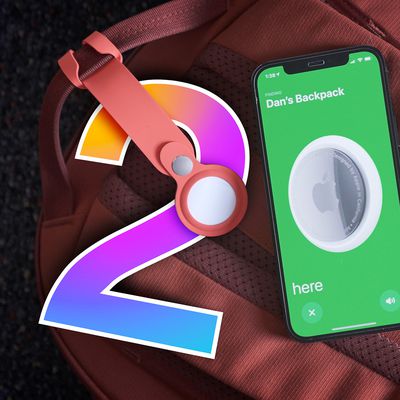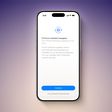iPhone Security Issue Opens Door to SMS Spoofing
 Jailbreak hacker and security researcher pod2g today revealed a newly-discovered security issue in all versions of iOS that could allow malicious parties to spoof SMS messages, making a recipient think that a message came from a trusted sender when it in fact came from the malicious party.
Jailbreak hacker and security researcher pod2g today revealed a newly-discovered security issue in all versions of iOS that could allow malicious parties to spoof SMS messages, making a recipient think that a message came from a trusted sender when it in fact came from the malicious party.
The issue is related to iOS's handling of User Data Header (UDH) information, an optional section of a text payload that allows users to specify certain information such as changing the reply-to number on a message to something other than the sending number. The iPhone's handling of this optional information could leave recipients open to targeted SMS spoofing attacks.
In the text payload, a section called UDH (User Data Header) is optional but defines lot of advanced features not all mobiles are compatible with. One of these options enables the user to change the reply address of the text. If the destination mobile is compatible with it, and if the receiver tries to answer to the text, he will not respond to the original number, but to the specified one.
Most carriers don't check this part of the message, which means one can write whatever he wants in this section : a special number like 911, or the number of somebody else.
In a good implementation of this feature, the receiver would see the original phone number and the reply-to one. On iPhone, when you see the message, it seems to come from the reply-to number, and you [lose] track of the origin.
pod2g highlights several ways in which malicious parties could take advantage of this flaw, including phishing attempts linking users to sites collecting personal information or spoofing messages for the purposes of creating false evidence or gaining a recipient's trust to enable further nefarious action.
In many cases the malicious party would need to know the name and number of a trusted contact of the recipient in order for their efforts to be effective, but the phishing example shows how malicious parties could cast broad nets hoping to snare users by pretending to be a common bank or other institution. But with the issue resulting in recipients being shown the reply-to address, an attack could be discovered or thwarted simply by replying to the message, as the return message would go to the familiar contact rather than the malicious one.
Popular Stories
Apple seeded the second iOS 26.2 Release Candidate to developers earlier this week, meaning the update will be released to the general public very soon.
Apple confirmed iOS 26.2 would be released in December, but it did not provide a specific date. We expect the update to be released by early next week.
iOS 26.2 includes a handful of new features and changes on the iPhone, such as a new...
Google Maps on iOS quietly gained a new feature recently that automatically recognizes where you've parked your vehicle and saves the location for you.
Announced on LinkedIn by Rio Akasaka, Google Maps' senior product manager, the new feature auto-detects your parked location even if you don't use the parking pin function, saves it for up to 48 hours, and then automatically removes it once...
Apple today released new firmware designed for the AirPods Pro 3 and the prior-generation AirPods Pro 2. The AirPods Pro 3 firmware is 8B30, up from 8B25, while the AirPods Pro 2 firmware is 8B28, up from 8B21.
There's no word on what's include in the updated firmware, but the AirPods Pro 2 and AirPods Pro 3 are getting expanded support for Live Translation in the European Union in iOS...
Macworld's Filipe Espósito today revealed a handful of features that Apple is allegedly planning for iOS 26.4, iOS 27, and even iOS 28.
The report said the features are referenced within the code for a leaked internal build of iOS 26 that is not meant to be seen by the public. However, it appears that Espósito and/or his sources managed to gain access to it, providing us with a sneak peek...
Apple has ordered 22 million OLED panels from Samsung Display for the first foldable iPhone, signaling a significantly larger production target than the display industry had previously anticipated, ET News reports.
In the now-seemingly deleted report, ET News claimed that Samsung plans to mass-produce 11 million inward-folding OLED displays for Apple next year, as well as 11 million...
The AirTag 2 will include a handful of new features that will improve tracking capabilities, according to a new report from Macworld. The site says that it was able to access an internal build of iOS 26, which includes references to multiple unreleased products.
Here's what's supposedly coming:
An improved pairing process, though no details were provided. AirTag pairing is already...
Apple today released iOS 26.2, the second major update to the iOS 26 operating system that came out in September, iOS 26.2 comes a little over a month after iOS 26.1 launched. iOS 26.2 is compatible with the iPhone 11 series and later, as well as the second-generation iPhone SE.
The new software can be downloaded on eligible iPhones over-the-air by going to Settings >...
Apple is about to release iOS 26.2, the second major point update for iPhones since iOS 26 was rolled out in September, and there are at least 15 notable changes and improvements worth checking out. We've rounded them up below.
Apple is expected to roll out iOS 26.2 to compatible devices sometime between December 8 and December 16. When the update drops, you can check Apple's servers for the ...
Apple is working on a smart home hub that will rely heavily on the more capable version of Siri that's coming next year. We've heard quite a bit about the hub over the last two years, but a recent iOS 26 code leak provides additional insight into what we can expect and confirms rumored features.
Subscribe to the MacRumors YouTube channel for more videos.
Macworld claims to have access to an ...
![]() Jailbreak hacker and security researcher pod2g today revealed a newly-discovered security issue in all versions of iOS that could allow malicious parties to spoof SMS messages, making a recipient think that a message came from a trusted sender when it in fact came from the malicious party.
Jailbreak hacker and security researcher pod2g today revealed a newly-discovered security issue in all versions of iOS that could allow malicious parties to spoof SMS messages, making a recipient think that a message came from a trusted sender when it in fact came from the malicious party.























